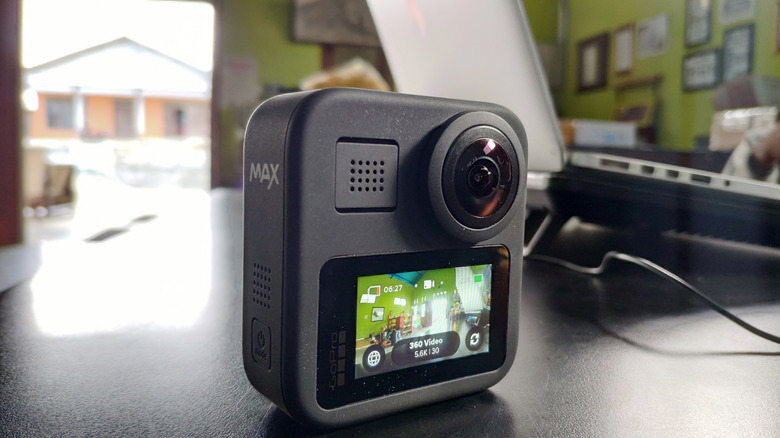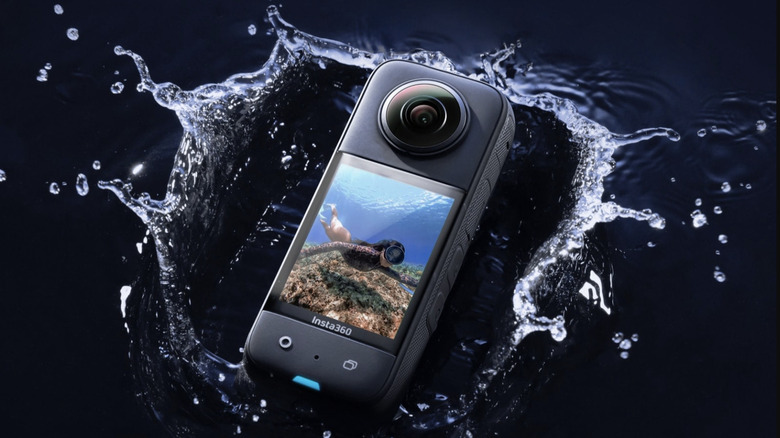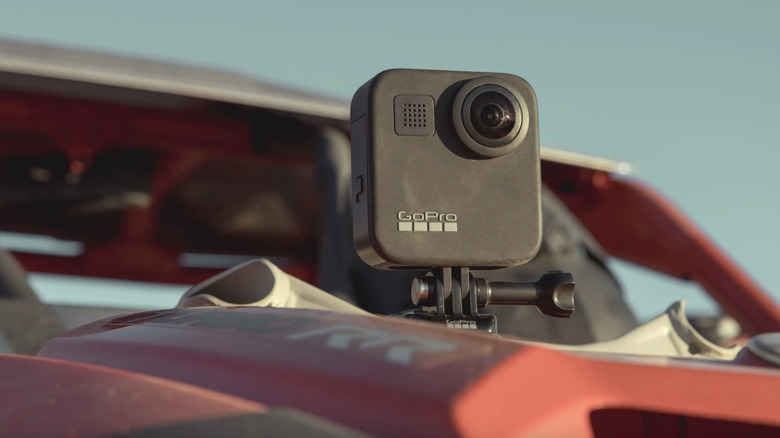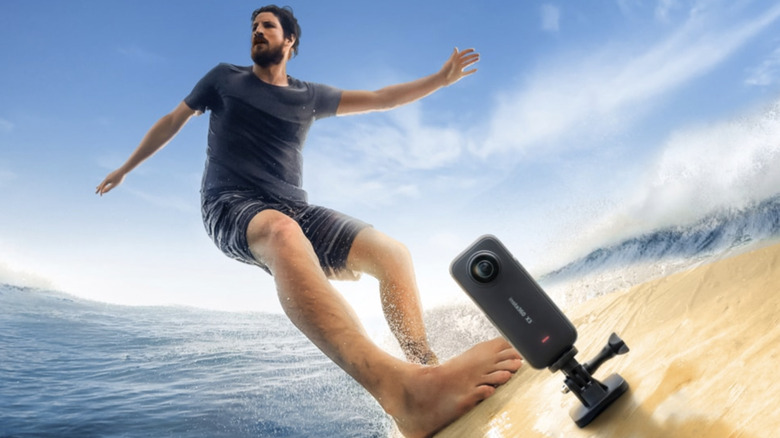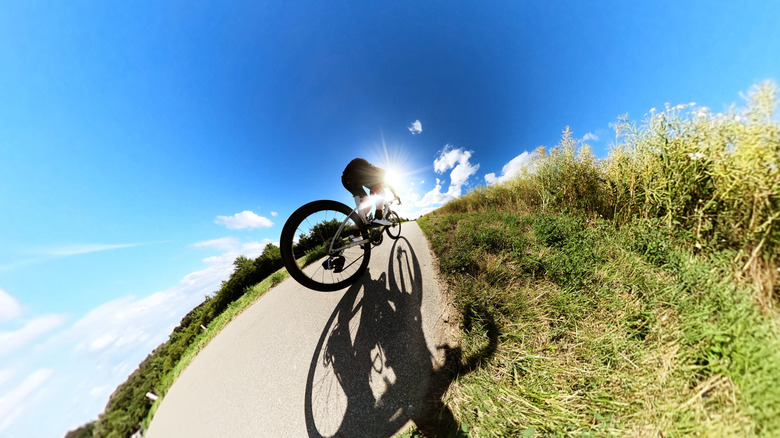Insta360 X3 V. GoPro MAX: How Do These Cameras Compare?
Cameras have become intricately linked with modern culture. For decades, people have used them to capture a variety of precious moments, from historical snapshots and incredible landscapes — like these breathtaking destinations every photographer must visit — to hilarious family gatherings during the holidays. With the rapid advancement of technology, not only has the quality of these cameras increased, but so too has the diversity in newly accessible markets like the action camera industry, where compact specialized cameras are used to capture high-quality video in dynamic, fast-paced moments. Two models that have risen as the flagship products for their respective brands in this action-packed market are the GoPro MAX and the Insta360 X3 cameras.
The GoPro MAX has had quite a long stint since its original release way back in October 2019, with the sequel having an estimated launch sometime in Q4 2024 due to delays. The MAX is currently sold at a retail price of about $499.99 in the standard package or $579.99 when bundled with accessories. Meanwhile, the Insta360 X3, developed by the Chinese company Arashi Vision, Inc., is relatively new to the market since it officially launched in September 2022. It is available at a price range from $355 to $729 depending on the specific bundle. Here we'll take a deeper dive into comparing the specs, design, and other features to see how these two action cameras match up.
The GoPro MAX has a more traditional design while the Insta360 X3 opts for a more rectangular frame
In terms of overall physical design, both the GoPro MAX and the Insta360 X3 are relatively similar in terms of function. The GoPro MAX takes more of a standard, point-and-shoot route with a condensed square frame encased in a rubber shield. On the front is a small touchscreen, while dual lenses are positioned on the front and back of the GoPro, allowing the user to alternative between traditional and 360 filming setups. At the bottom are integrated mounting prongs that can attach to over thirty different types of mounts. Powered by 1,600 mAh lithium-ion batteries, the camera can last for about 105 minutes in standard, single-lens shooting or 80 minutes for the 360 setup. It requires a microSD card for storage, sold separately. The MAX has an array of manual buttons for power and shutter, which gives it that traditional style, as well as six microphones and is waterproof up to 16 feet.
On the other hand, the Insta360 X3 goes in a more unconventional route in terms of physical style, with a more rectangular body and larger touchscreen on the back. Like the MAX, the Insta360 includes manual buttons to navigate menus; however, it also includes an optional quick-menu that the user can customize to their liking. Similar to the MAX, integrated tripod mounts are placed at the bottom. It uses a microSD card for local storage; however, the Insta360 can livestream without a card. It also utilizes an 1,800 mAh lithium-ion battery that gives an average run time of 81 minutes. While the Insta360 X3 only includes 4 microphones, it can continue to operate while submerged in up to 33 feet of water.
The Insta360 X3 has a higher megapixel count and movie bitrate than the GoPro MAX
When taking a closer look at the lenses used by the Insta360 X3 and the GoPro MAX, the differences become more apparent. The Insta360 utilizes dual fish-eye 6.7 millimeter, 35 millimeter equivalent focal length lenses capable of capturing 360 video at a maximum resolution of 5.7k, which only drops to 4k in single-lens mode. To capture smooth, high-quality video, the Insta360 has a maximum bitrate of 120 mbps (megabits per second). With still images, the Insta360 can capture photos at 72 megapixels, and with an f/1.9 aperture and Active HDR mode, the action camera can reduce overexposure for both video and still images. Due to the overlapping layout of the two fish-eye lenses, users can easily erase a selfie stick from the frame while editing footage, thanks to the "invisible selfie stick" mode.
Switching over to the GoPro MAX, users can alternate between HERO mode for capturing tradition-style single-lens photos and footage, or the 360 setting for panoramic and time-lapse video and stitched images. When reviewing footage on the touchscreen, the MAX enables the user to select different frames of narrow, linear, wide, or Max SuperView. However, the MAX does not include Active HDR or the invisible selfie stick modes of the Insta360, so knowing some of the more important tips and tricks for editing your GoPro footage can go a long way to maximizing the end result. Moreover, the MAX can capture a maximum of 17 megapixels and has a max video bitrate of 78 mbps, both less than the Insta360.
The Quik App for editing on GoPro MAX is simplified for users with less editing experience
When it comes to the editing software, both action cameras come equipped with their own apps. For the GoPro MAX, users import photos and footage to the Quik app where they can compile a quick highlights reel, reframe shots, or edit a high-quality vlog with a library of music, transitions, and other filters. In addition to these editing capabilities, the Quik app organizes your stored files so it's easier to keep track of your content, plus it transforms your phone into a MAX remote control for quick, on-the-fly adjustments. Or if your hands are full, the MAX has as many as 12 configured voice commands to make sure all angles are covered. However, whether you have access to the full suite of features on the app depends on your GoPro Premium plan, which can range from $24.99 to $99.99 per year depending on the subscription.
While the Quik app is designed with simplicity in mind for users that may not be as experienced in editing footage and photos, the Insta360 designated app — Insta360 Studio — contains a more multifaceted interface with more emphasis on video editing. A Deep Track AI system within the app allows users to lock-on to subjects so that they are properly centered within the frame of your videos or pictures. Moreover, the AI algorithm provides immersive filters for video edits like "sky swap," where you can swap out the horizon with another backdrop like Vincent van Gogh's "Starry Night." However, because of all the minute enhancements available in the Insta360 suite, the app may be a bit complex for beginners or users with minimal editing experience.
Both are evenly matched with stabilization technologies
Lastly, when it comes to action cameras, another key component is how well they stabilize and track images. Whether you're skiing or surfing, it's hard to focus on technique while ensuring the footage isn't too shaky or unclear. However, with optical image stabilization technology, action cameras automatically maneuver the lenses to counter the effect of movement and shakiness while maintaining image quality.
Both the GoPro MAX and Insta360 X3 are fairly matched with their own integrated stabilization technologies, labeled as HyperSmooth and FlowState systems, respectively. Additionally, both action cameras contain 360-degree horizon lock, which keeps the horizon centered while the subjects of the footage are free to move normally.
Each of these camera's stabilization systems do have their own setbacks. For the GoPro MAX, the HyperSmooth system struggles to keep up when used in environments that are poorly lit. Meanwhile, the Insta360 X3 users have noticed that there is a slight shimmering effect that occurs when FlowState stitches footage or images together. However, both issues can be resolved with some minor adjustments via editing.
